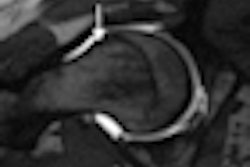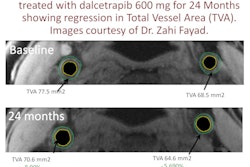A preliminary study from the University of Minnesota suggests that an MRI technique known as SWIFT (sweep imaging with Fourier transform) provides a helpful 3D assessment of oral cancer in the jawbone by showing fine details of intramandibular anatomy, according to a report in this month's issue of Archives of Otolaryngology-Head and Neck Surgery.
Detecting oral cancer in the jawbone prior to surgery is often difficult using currently available imaging techniques, according to the authors. However, accurately determining its existence might allow a surgeon to contain cancerous cells, prevent unnecessary mandible removal, and better plan for reconstruction (Arch Otolaryngol Head Neck Surg, September 2011, Vol. 137:9, pp. 916-919).
Lead study author Dr. Ayse Tuba Karagulle Kendi and colleagues enrolled patients with oral carcinoma who underwent segmental mandibulectomy at a tertiary academic institution. The researchers used a 9.4-tesla MRI system (Varian Medical Systems) to examine two specimens from each patient for cortical and medullary invasion by cancer cells.
Histologic sections were then compared with the images obtained by the SWIFT technique.
Images from the SWIFT technique with in vitro specimens were of adequate resolution (156 to 273 µm) to accurately depict tumor invasion of cortical and medullary bone. Evidence of mandibular invasion with tumor was found in both specimens by histopathology, and the researchers found a high degree of correlation between the MRI and histopathologic findings.
In addition, the correlations between the histologic and MR images of the two specimens clearly showed malignant invasion that had not been previously demonstrated with MR techniques, according to the authors.


.fFmgij6Hin.png?auto=compress%2Cformat&fit=crop&h=100&q=70&w=100)





.fFmgij6Hin.png?auto=compress%2Cformat&fit=crop&h=167&q=70&w=250)











